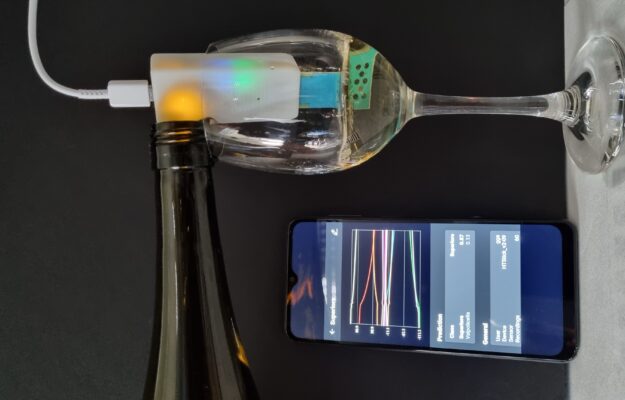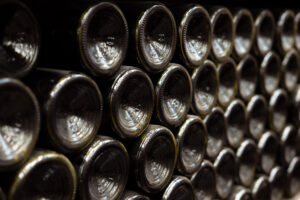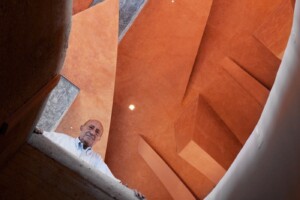The idea originated from a simple, though apparently disconcerting question - is it possible to teach computers the sense of taste, which, in humans is the result of thousands of years of evolution, and which is extraordinarily effective in letting us evaluate food and drink, as well as guarding us against ingesting harmful substances? The answer has come from researchers at IBM Research in Zurich (the IBM Research and Development Division). They have created HyperTaste, an “artificial palate” that is capable of tasting and evaluating different types of drinks, starting from wine. It is an apparently simple device - a small stick-shaped device that is immersed in contact with the substance to be analyzed. However, it has an extremely complex function, which, thanks to AI, or Artificial Intelligence, can analyze and define the composition of liquids through a “chemical fingerprint”. Consequently, it only takes a few minutes for HyperTaste to recognize, for instance, the geographical origin of a wine (Tuscany or Piedmont?), and the type of vines from which it has been produced (Sangiovese or Pinot Noir?). It is also capable of sensorial analysis. In other words, if the wine has obvious defects, either too acidic or not acidic enough, and whether the tannins are hard or soft. The researchers, though, want to reassure everyone that no matter how well trained, the artificial palate can never replace human experience. It was designed to be used as a support in some specific circumstances; for instance, in the industrial sector, or as a useful tool for the fight against counterfeiting.
How does HyperTaste work? First, it is immersed in the liquid, and then its electrochemical sensors, made up of pairs of electrodes, respond to combinations of molecules when electricity passes through them. This signal creates a “chemical fingerprint”, which is shown in an app connected directly to the device.“Actually”, Gianmarco Gabrieli, a young Italian researcher (28 years old), responsible for the HyperTaste project at IBM Research Europe in Zurich, explained to WineNews, “its operating principles are subordinate to human experience. First of all, we have a group of wines tasted by a panel of wine experts, who draw up a sensorial analysis through their personal evaluations, indicated using predefined scales and scores. At this point, we then do a statistical analysis and draw up an average of the ratings, with which we train HyperTaste. This is how the machine learns, based on the average values of the sensory analysis. However, one can also take a personalized approach. In this case, for instance, you transmit the average of your subjective analyses on different wines so that the evaluations are based on your personal taste and experience, rather than on that of a group of tasters. Therefore, your subsequent reviews will be unique and personalized. Once trained, the sensor may be able to also evaluate new wines. Naturally, the more we train it with different types of wines, the more useful it will be. This is the reason why human instructions will always be the basis of operating HyperTaste and, in any case, this invention, however sophisticated, will never be able to replace the complexity of human taste buds”.
HyperTaste can be used not only for wine, but also for other drinks. So far, studies have been carried out on coffee, fruit juice, mineral water, soft drinks and even gin. In the future, it could also be applied to analyzing extra virgin olive oil, a potentially very interesting area for the sector, but at the moment complicated by the fact that oil contains substances that reduce its electrical conductivity. The device was created in 2019 at the IBM Research laboratories in Zurich. It was presented, for the first time in Italy, recently in Florence, at the BTO- Be Travel Onlife, an event regarding innovation in tourism, dedicated to the world of travel and artificial intelligence.
Multi-sensor systems, such as electronic tongues and noses, have been explored over the past few decades as a means to conduct complex analyses in shorter timescales than conventional approaches, based on analytical instrumentation or human sensory experts. More importantly, there are many substances that we would like to “taste” without actually putting them in our mouths. This is yet another reason to use HyperTaste in endless innovations and applications in the science of materials, sustainability, food science, and health. The implications are extensive, thanks to the ability to validate the chemical composition and properties of products in minutes, rather than hours, at a fraction of the cost and even outside conventional laboratories.
Copyright © 2000/2025
Contatti: info@winenews.it
Seguici anche su Twitter: @WineNewsIt
Seguici anche su Facebook: @winenewsit
Questo articolo è tratto dall'archivio di WineNews - Tutti i diritti riservati - Copyright © 2000/2025








































































































































































































